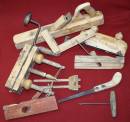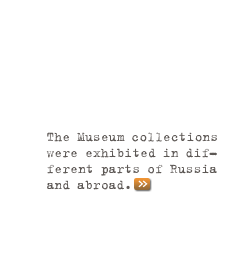Museum Collection
Joiner
Joiner’s tools of the late 19th – mid-20th centuries in the amount of 60 pieces have replenished the collection of Sholokhov Museum-Reserve.
From time immemorial, wood has been a priority building material, raw material for the manufacture of household utensils, decor. One of the important qualities of this natural material is its ease of processing. The development of joiner's work can be judged not only by wooden products, but also by the tools that were used to manufacture them.
Special tools for wood processing and the manufacture of various wooden products that have expanded the museum's collection according to their purpose can be divided into several groups: measuring and marking (a ruler, a corner); sawing (a bow saw, a hacksaw, a drag rope); chopping and drilling (a rotting, a gimlet); planing tools, which include special planers (moldings - for profiling edges, a zenzbel - for processing quarters and folds, a seam - for sampling quarters, a dowel - for sampling a narrow straight groove, a planer-humpback, a fillet - for sampling grooves on a wooden surface parts, a Fedegubel - to perform a longitudinal protrusion along the edge of the workpiece), a half jointer - for planing parts of small length, a jointer - for smooth processing and equalization of large areas.
These things tell about one of the types of labor activity of the Don inhabitants at the end of the 19th – beginning of the 20th centuries. It should be noted that for centuries joiner's tools have not changed: hammers, nails, planers and saws still exist, and they are used the same way as before.
Marina Pribytkova










